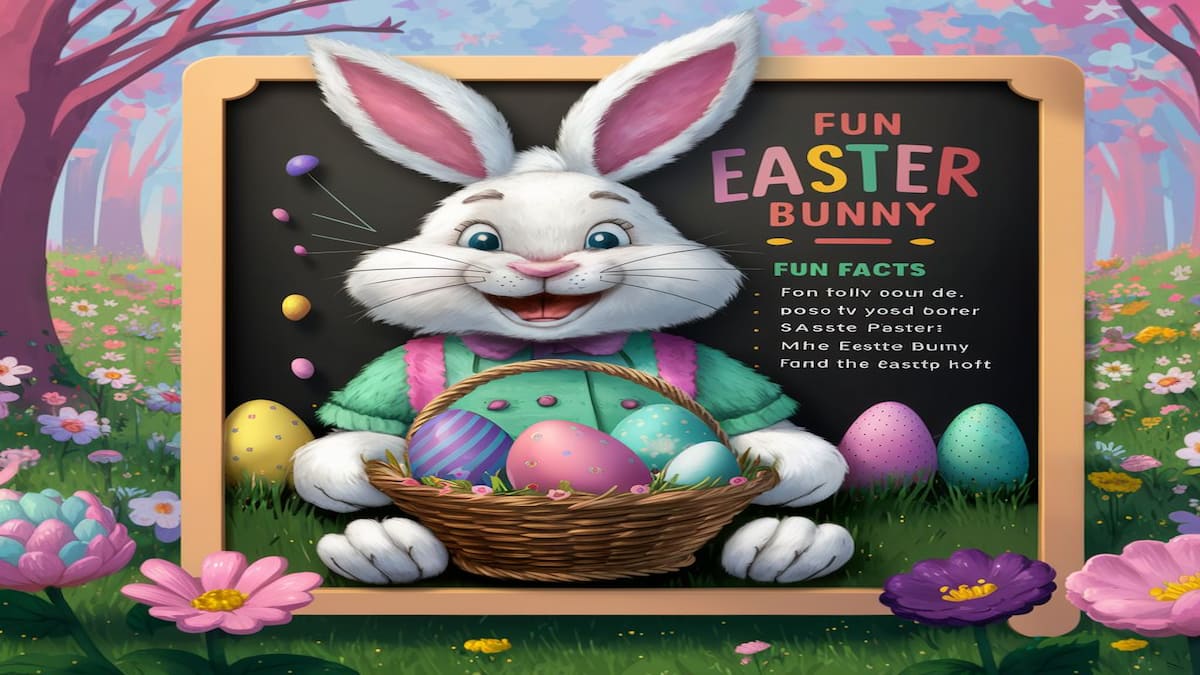While the Easter Bunny is a beloved symbol of the Easter holiday, there are many interesting and lesser-known facts about this famous rabbit. The tradition of the Easter Bunny arose among German Lutherans in the 1600s, with the Easter hare originally playing the role of a judge, evaluating whether children were well-behaved or disobedient during the previous year. The iconic egg-laying ability of the Easter Bunny stems from ancient folklore depicting rabbits as extremely fertile creatures associated with spring and new life. Surprisingly, the custom of making nests for the Easter Bunny to lay eggs originated in Germany as children would create nests for the mythical creature and await its colorful delivery. In Australia, a different marsupial takes over the Easter Bunny duties – the Easter Bilby, as a campaign to raise awareness for the endangered species. With deep cultural roots, the Easter Bunny remains one of the most recognizable symbols of Easter celebrations worldwide.
10+ Interesting Facts About Easter Bunny
Hopping Through History: The Easter Bunny’s origins aren’t in the Bible, but in pre-Christian Germany. There, the hare was a symbol of the Pagan goddess of spring and fertility, Eostre. As Christianity spread, pagan traditions were sometimes blended with Christian holidays, and the Easter Bunny, originally associated with Eostre, became associated with Easter.
Egg-cellent Symbolism: Rabbits are linked to spring for a reason. They are highly fertile and often seen frolicking in fields during springtime, which coincides with Easter celebrations. This association with renewal and rebirth aligns with the themes of Easter.
The tradition of the Easter Bunny as we know it today is believed to have originated in Germany in the 16th century. German immigrants brought the custom of the “Osterhase” to America in the 1700s, where it evolved into the Easter Bunny we recognize today.
From Hare to Hare: While most picture a cute bunny, there’s debate on the Easter Bunny’s specific species. Some believe it’s an Arctic hare based on its white fur and connection to pagan lore. Others simply say it’s a rabbit, leaving the details to our imagination.
One of the Easter Bunny’s main duties is delivering Easter eggs, but have you ever wondered why? Eggs have long been associated with fertility and rebirth in various cultures. In ancient times, people would exchange eggs as a symbol of new life during spring festivals. The tradition of decorating eggs for Easter dates back centuries and is still practiced around the world today.
Laying it On Thick: While we know the Easter Bunny delivers eggs, some traditions claim it lays them too. This quirky concept also harks back to the fertility symbolism associated with the Easter Bunny’s origins.
Global Greetings: Though widely celebrated, the Easter Bunny isn’t a universal symbol. In Germany, it’s called “Osterhase”, while Switzerland has the “Osterhas” (hare) and the “Osterküken” (chick). In Australia, the Easter Bunny takes a backseat to the Easter Bilby, a native marsupial.
Not Just for Kids: Though often associated with children, the Easter Bunny has held cultural significance for adults too. In some parts of Europe, Easter egg hunts were once a tradition for unmarried women, where finding a specific egg could symbolize finding a husband.
A Dash of Speed: How does the Easter Bunny deliver eggs to all those houses in one night? Well, some believe it’s due to its incredible speed. Based on the Arctic hare theory, the Easter Bunny could potentially reach speeds of up to 40 miles per hour, making its egg-delivery mission much more believable.
More Than Meets the Eye: The Easter Bunny’s appearance has evolved over time. Early depictions showed it as a frightening hare carrying a whip, used to punish naughty children. Thankfully, the modern Easter Bunny is much friendlier, often depicted in colorful clothing and carrying a basket of eggs.
A Chocolatey Tradition: While eggs were traditionally decorated and exchanged during Easter, chocolate eggs only became popular in the 19th century. Today, they are a beloved Easter treat enjoyed by people of all ages. The first chocolate Easter bunnies were made in Germany in the early 1800s. Today, chocolate bunnies come in all shapes and sizes, ranging from small, bite-sized treats to giant, hollow sculptures.
A Symbol of Hope: At its core, the Easter Bunny represents joy, hope, and the promise of new beginnings, much like the spirit of Easter itself. So, the next time you see the Easter Bunny, remember the long and interesting journey this cultural icon has taken.
While the Easter Bunny is a well-known symbol in many Western countries, other cultures have their own unique traditions for celebrating Easter. In Australia, for example, the Easter Bilby has become a popular alternative to the Easter Bunny. The bilby, a small marsupial native to Australia, is promoted as an environmentally friendly symbol of Easter, raising awareness about conservation efforts.
In some communities, Easter Bunny parades are held as part of Easter celebrations. These parades feature people dressed up as Easter Bunnies, often accompanied by floats, music, and festive decorations. The largest Easter Bunny parade is held in New York City, where thousands of spectators gather to watch the procession.
Have you ever wondered where the Easter Bunny lives? According to folklore, the Easter Bunny resides in a burrow or underground den, similar to a rabbit’s natural habitat. Children often leave out carrots or lettuce as a treat for the Easter Bunny, just as they leave cookies for Santa Claus on Christmas Eve.

